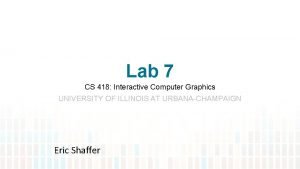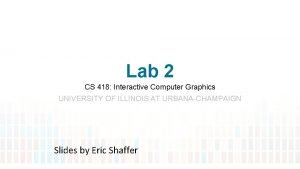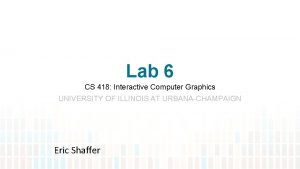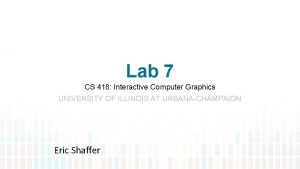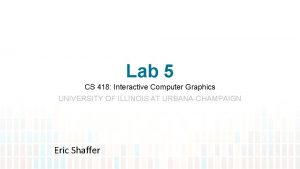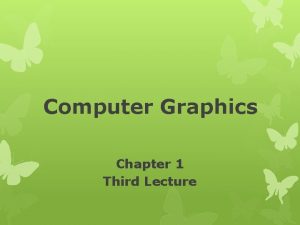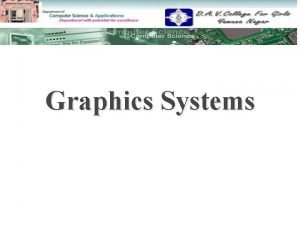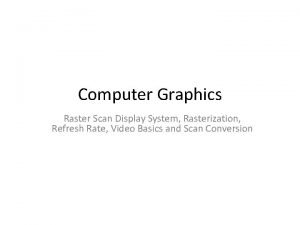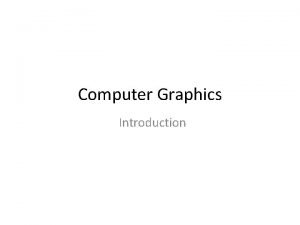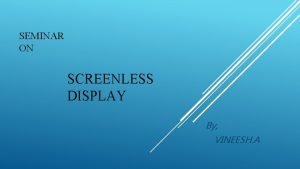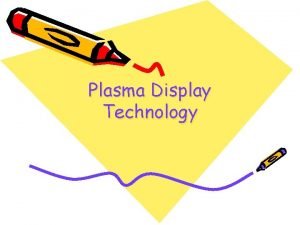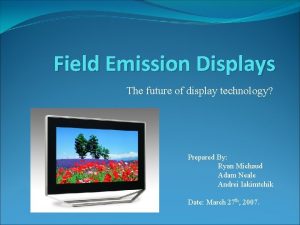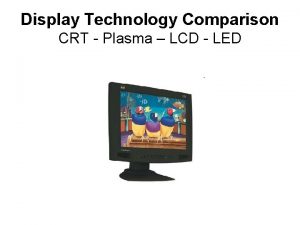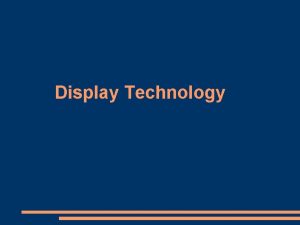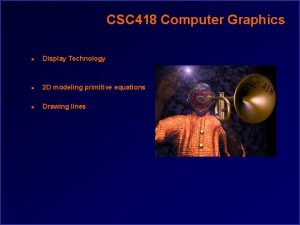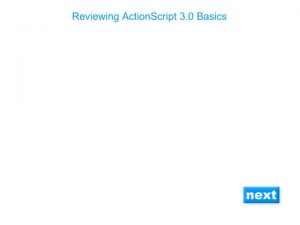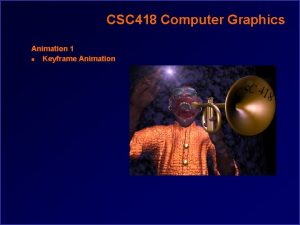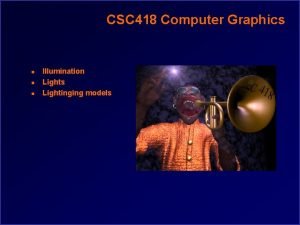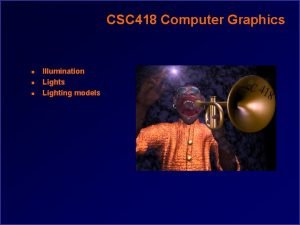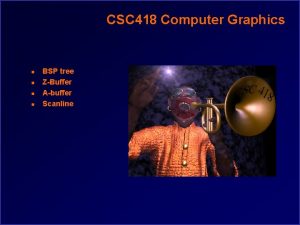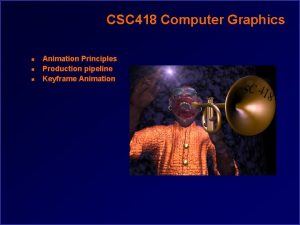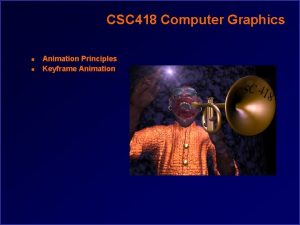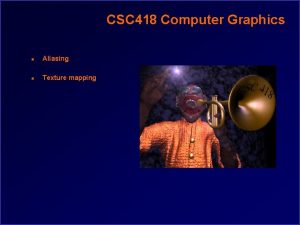CSC 418 Computer Graphics n Display Technology n




















- Slides: 20

CSC 418 Computer Graphics n Display Technology n 2 D modeling primitive equations n Drawing lines

Raster Displays I V time Electron beam Intensity

Raster Displays II Gamma correction V time Electron beam Intensity

Raster Displays II Gamma correction

Raster Displays II Gamma correction

Display Architecture Frame Buffer

Display Architecture Double Buffer

Display Architecture II True Color Frame Buffer : 8 bits per pixel RGB

Display Architecture II Indexed Color Frame Buffer : 8 bit index to color map

Display Devices II Plasma Immersive Holographic Head-mounted Volumetric

Line Drawing What is the best line we can draw?

Line Drawing What is the best line we can draw? The best we can do is a discrete approximation of an ideal line. Important line qualities: n Continuous appearence n Uniform thickness and brightness n Accuracy (Turn on the pixels nearest the ideal line) n Speed (How fast is the line generated)

Equation of a Line Explicit : y = mx + b Parametric : x(t) = x 0 + (x 1 – x 0)*t y(t) = y 0 + (y 1 – y 0)*t P = P 0 + (P 1 -P 0)*t P = P 0*(1 -t) + P 1*t (weighted sum) Implicit : (x-x 0)dy - (y-y 0)dx = 0

Algorithm I Explicit form: y= dy/dx * (x-x 0) + y 0 float y; int x; for ( x=x 0; x<=x 1; x++) { y= y 0 + (x-x 0)*(y 1 -y 0)/(x 1 -x 0); setpixel (x, round(y)); }

Algorithm I Explicit form: y= dy/dx * (x-x 0) + y 0 float y; int x; dx = x 1 -x 0; dy = y 1 – y 0; m = dy/dx; y= y 1 + 0. 5; for ( x=x 0; x<=x 1; x++) { setpixel (x, floor(y)); y= y + m; }

Algorithm I DDA (Digital Differential Analyzer) float y; int x; dx = x 1 -x 0; dy = y 1 – y 0; m = dy/dx; y= y 1 + 0. 5; for ( x=x 0; x<=x 1; x++) { setpixel (x, floor(y)); y= y + m; }

Algorithm II Bresenham Algorithm n n n Assume |line slope <1 Slope is rational (ratio of two integers). m = (y 1 - y 0) / (x 1 - x 0) The incremental part of the algorthim never generates a new y that is more than one unit away from the old one (because the slope is always less than one) yi+1 = yi + m

Algorithm II Bresenham Algorithm Geometric Interpretation Distance of midpt from line = dy- ½*dx

Algorithm II Bresenham Algorithm Implicit View F(x, y) = (x-x 0)dy - (y-y 0)dx F(x+1, y + 0. 5) = F(x, y) + dy -0. 5 dx 2 F(x+1, y+ 0. 5) = d = 2 F(x, y) + 2 dy -dx F(x+1, y) = F(x, y) + dy F(x+1, y+1) = F(x, y) +dy-dx d’ = d + 2 dy - 2 dx

CSC 418 Computer Graphics Next Lecture…. n n Polygons – Triangulation – Scan conversion – Convex/Concave – clipping) 2 D affine transformations and properties, Homogeneous coordinates
 Display technology in computer graphics
Display technology in computer graphics Cs 418
Cs 418 Glcreatebuffer
Glcreatebuffer Cs 418 interactive computer graphics
Cs 418 interactive computer graphics Cs 418 interactive computer graphics
Cs 418 interactive computer graphics Cs 418 interactive computer graphics
Cs 418 interactive computer graphics Plasma panel display in computer graphics
Plasma panel display in computer graphics Raster scan display in computer graphics
Raster scan display in computer graphics Programming raster display system in computer graphics
Programming raster display system in computer graphics Raster scan display and vector scan display
Raster scan display and vector scan display Graphics display devices
Graphics display devices Raster scan display system
Raster scan display system Hand held computer
Hand held computer Computer graphics chapter 1 ppt
Computer graphics chapter 1 ppt Cathode ray tube in computer graphics
Cathode ray tube in computer graphics Calligraphic refresh graphics display
Calligraphic refresh graphics display Screenless display seminar ppt
Screenless display seminar ppt Gas plasma monitor
Gas plasma monitor History of display technology
History of display technology Crt vs plasma
Crt vs plasma Crt display technology
Crt display technology

